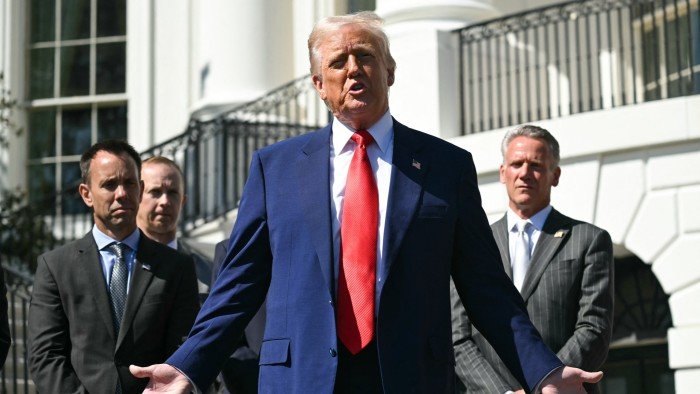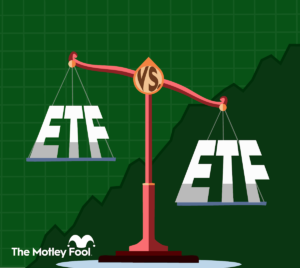Nostalgia for manufacturing will make the US poorer

This text is an on-site model of Free Lunch publication. Premium subscribers can enroll right here to get the publication delivered each Thursday and Sunday. Normal subscribers can improve to Premium right here, or discover all FT newsletters
Welcome again. Now that Donald Trump has paused his “reciprocal” tariff plans (as predicted in final week’s publication), this version will unpick the US president’s broader agenda to show America right into a “manufacturing superpower”.
In his April 2 “liberation day” speech, the commander-in-chief invited retired autoworker Brian Pannebecker to say a couple of phrases: “I’ve watched plant after plant after plant in Detroit . . . shut. [The president’s tariff] insurance policies are going to deliver product again into these underutilised crops . . . I can’t wait to see what’s taking place three or 4 years down the highway”.
How would possibly one debate in opposition to this viewpoint? That’s what I’ll try to stipulate right here.
First, empathy. Over the previous 4 a long time, manufacturing jobs in America have declined. Aggressive imports from overseas have contributed to manufacturing unit closures, and lots of former industrial areas have did not regenerate. (I like to recommend Peter Santenello’s YouTube channel, which paperwork life in these US counties.)
In that point, US earnings inequality has risen. And essentially the most capital-rich have elevated their share of general wealth.
Analysis by Jim Reid, Deutsche Financial institution’s head of worldwide macro analysis, finds that the US wealth-to-income ratio tends to trace worldwide commerce as a share of worldwide GDP over time.
“[This potentially reflects] the advantages [of globalisation] accruing to shareholders by extra environment friendly international provide chains, a wider market, and the entry and affect of lower-cost labour in rising markets,” he wrote in a shopper be aware. “This has arguably squeezed developed market labour, notably low-skilled employees.”
Certainly, US capital markets tanked as the truth of America’s international protectionist agenda kicked in. However the president used the inventory market falls to strengthen his platform: “I’m proud to be the president for the employees, not the outsourcers; the president who stands up for Predominant Avenue, not Wall Avenue; who protects the center class, not the political class.”
The attract of onshoring manufacturing is, then, clear. However to help the president’s plans, one should additionally consider that America can, and will, deliver again labour-intensive manufacturing unit jobs, and that tariffs are the easiest way to take action.
Commerce secretary Howard Lutnick spelt out the ambition in a latest interview: “The military of tens of millions and tens of millions of human beings screwing in little, little screws to make iPhones, that type of factor goes to come back to America.” (Notably, Trump exempted smartphones and different client electronics from his “reciprocal” tariffs on Friday, however sector-specific duties are within the works.)
Both means, if the objective is to recreate the dimensions and specialisation of the creating world’s factories, the US will want employees and capital.
However few People wish to go into industrial work. A 2024 Cato Survey discovered that just one in 4 consider they might be higher off in a manufacturing unit over their present employment. (A lot of Trump’s “center class” work in non-goods-producing sectors at this time.) The administration can be hostile to immigration.
As for capital, impelling manufacturing unit homeowners to arrange in America by elevating import duties has its limits. Given the prices of transferring manufacturing to the US, buyers will want labour, dependable entry to home enter chains and readability over how lengthy tariffs will stay in place. All are briefly provide.
For measure, take Apple. Dan Ives, a Wedbush analyst, estimated that the iPhone maker would wish at the very least three years and $30bn simply to shift a tenth of its provide chain from Asia to the US.
The administration reckons these are a “transition value” on the trail to bringing again blue-collar jobs. And, as Pannebecker’s remarks recommend, some are keen to present it time.
Even when some manufacturing unit jobs did return to America, my query to Trump and his supporters is what value they’re keen to pay for it.
It’s true that some manufacturing unit jobs have been misplaced to outsourcing (though automation has performed a major function too). However specializing in that loss — and looking for to curb US commerce openness — obscures the larger, economy-wide advantages which have arisen due to it.
US manufacturing output has really risen over the previous 4 a long time, at the same time as manufacturing unit jobs have declined. American trade is extra productive at this time. It makes higher-value merchandise at increased wages with fewer employees (and extra robots).
In reality, measured by worth added per employee, US manufacturing ranks first among the many main economies (estimated to be virtually seven occasions that of China). Over one-fifth of US manufactured exports are merchandise with excessive analysis and improvement depth, equivalent to superior tech and aerospace merchandise.
The US ranks second solely behind China in its share of general international manufacturing output. By most measures, America is already “a producing superpower”.
It ceded the highest spot partly by outsourcing decrease wage jobs and shifting into increased worth added financial actions: providers, analysis and improvement, and superior manufacturing. This has allowed incomes, jobs and the economic system to develop.
“People now design and engineer merchandise equivalent to tennis sneakers and iPhones assembled elsewhere,” stated Colin Grabow, an affiliate director on the Cato Institute. “They could not toil in factories, and even work for firms that personal factories, however are nonetheless very important cogs in manufacturing traces.”
Since 1990 America has misplaced over 5mn manufacturing jobs. In that point, it has gained 11.8mn roles in skilled and enterprise providers, and three.3mn in transportation and logistical actions, linked to multinational provide chains.
However, if the purpose of a tariff wall is to pressure labour-intensive components of the provision chain to maneuver onshore, it would come at the price of these higher-value actions. US companies might want to shift assets in the direction of them, which might imply scaling again on providers and R&D operations. (As talked about, international capital is unlikely to be forthcoming and labour provide is proscribed.)
This additionally means accepting increased prices. Given much less scale, increased wages (relative to creating economies) and the “transition prices”, Trump’s plan would elevate client costs for low-income households that at the moment get low-cost items through worldwide markets. Till home provide chains are established, increased import prices due to tariffs could have the identical impact.
A substantial portion of demand for any new manufacturing of bodily items would even have to come back from overseas. Larger factory-gate costs and retaliatory tariffs by US commerce companions will hinder that. People spend a larger portion of their earnings on providers (well being, providers and leisure). A variety of items have additionally change into “dematerialised” within the digital world (eg DVDs, maps).
For measure, analysis by the Tax Basis highlights how Trump’s Part 232 tariffs on metal and aluminium imports in his first time period raised manufacturing prices for producers (decreasing employment in these industries), raised client costs and harm exports. The Peterson Institute for Worldwide Economics estimated that the price of “saving” a single job in steel-producing industries was round $650,000. Think about this throughout Trump’s panoply of tariffs.
If creating labour-intensive manufacturing unit work might be arduous, undesirable and troublesome to attain with tariffs, what’s the choice? Ought to former industrialised components of America simply settle for relative earnings decline?
“What we’ve realized is that changes to massive damaging shocks to manufacturing employment — together with the nice recession, automation and import competitors — are very gradual and have massive long-term penalties for communities,” stated Kyle Handley, affiliate professor of economics on the College of California, San Diego.
Meaning supporting individuals and companies to adapt quicker moderately than defending jobs. This would come with easing planning guidelines to help regeneration, incentivising monetary markets extra in the direction of investments in the actual economic system, backing retraining initiatives to assist individuals upskill and making certain sturdy competitors coverage. (Tariffs add limitations to entry and make it more durable for smaller companies to scale.)
Globalisation has change into a handy scapegoat for home coverage shortcomings in these areas. Fixing them would additionally incentivise extra international funding and job creation within the US than protectionism.
Constructing financial resilience and agility — to allow post-industrial communities to reply to and profit extra from the forces of worldwide commerce — will not be simple. Neither is working with commerce companions to deal constructively with disputes. However persevering at the very least preserves the growth-enhancing results of worldwide provide chains.
Trump’s plan as an alternative quantities to transferring America again a number of a long time. If that’s what his supporters need, they need to even be content material with making the nation as a complete poorer.
Ship your rebuttals and ideas to freelunch@ft.com or on X @tejparikh90.
Meals for thought
What number of “misplaced Einsteins” and “misplaced Marie Curies” are there, and what may be carried out about them? This IMF weblog highlights how proficient youngsters from deprived backgrounds find yourself innovating far beneath their potential.
Really helpful newsletters for you
Commerce Secrets and techniques — A must-read on the altering face of worldwide commerce and globalisation. Enroll right here
Unhedged — Robert Armstrong dissects crucial market traits and discusses how Wall Avenue’s finest minds reply to them. Enroll right here















